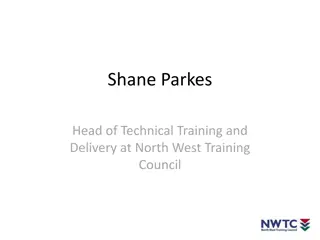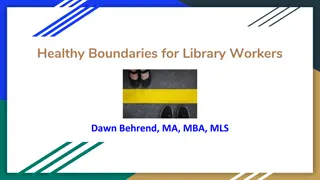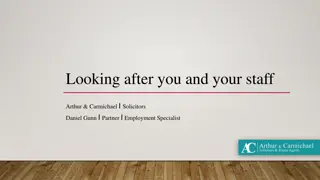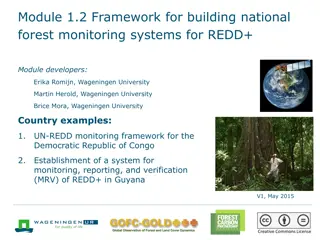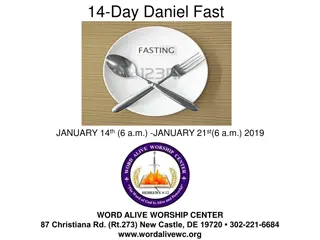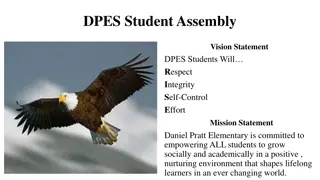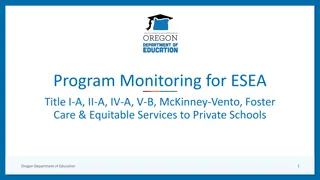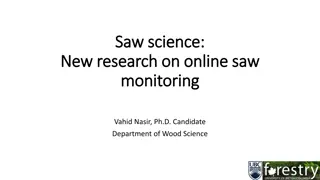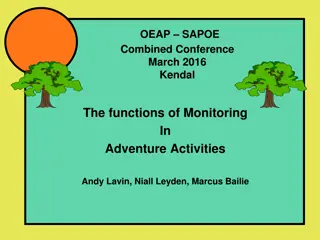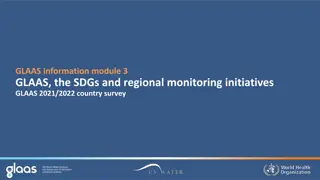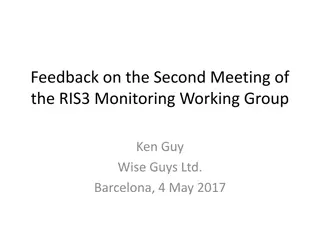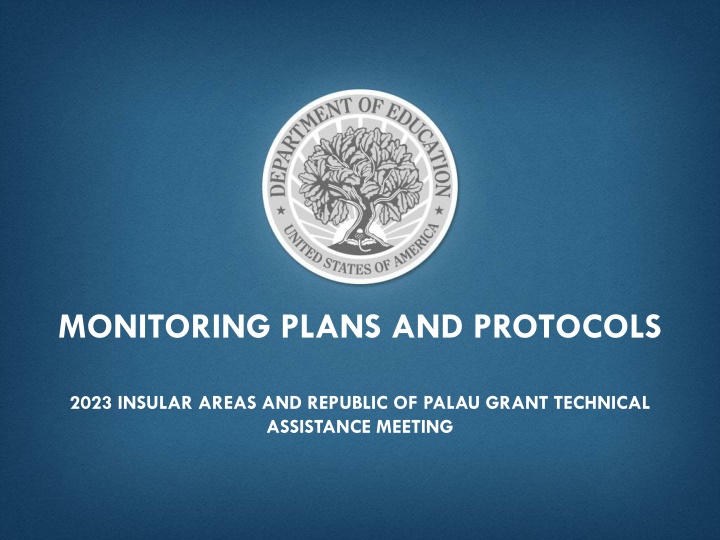
Grant Technical Assistance Meeting on Monitoring Plans and Protocols in Insular Areas and Republic of Palau
"Learn how to define monitoring purpose, customize plans, conduct site visits, and select subrecipients/grantees for effective program monitoring. Explore risk assessment and goals to ensure program integrity and compliance."
Download Presentation

Please find below an Image/Link to download the presentation.
The content on the website is provided AS IS for your information and personal use only. It may not be sold, licensed, or shared on other websites without obtaining consent from the author. If you encounter any issues during the download, it is possible that the publisher has removed the file from their server.
You are allowed to download the files provided on this website for personal or commercial use, subject to the condition that they are used lawfully. All files are the property of their respective owners.
The content on the website is provided AS IS for your information and personal use only. It may not be sold, licensed, or shared on other websites without obtaining consent from the author.
E N D
Presentation Transcript
MONITORING PLANS AND PROTOCOLS 2023 INSULAR AREAS AND REPUBLIC OF PALAU GRANT TECHNICAL ASSISTANCE MEETING
During this session, participants will hear from the Office for Elementary and Secondary Education s (OESE) Monitoring and Risk Team about how to: Define and explain the purpose of monitoring, and what activities are required to carry out a successful monitoring plan. Customize monitoring plans to support subrecipients and monitor grant-funded projects. Employ effective strategies for site visits and desk reviews. 2
OESES MANAGEMENT SUPPORT OFFICE MONITORING, RISK, & AUDIT TEAM (MRT) MSO Director: Shane Morrisey MSO Audit Liaison Specialist: Dan Behrend MSO Audit Liaison Officer: Jed Sorokin-Altmann MRT Responsibilities Audit Resolution Risk Assessments OIG/GAO Liaison Consolidated Monitoring All things fiscal 3
AGENDA Purpose of Monitoring Considerations in selecting subrecipients/grantees to monitor Developing the process for monitoring Ways you and your school systems should consider and think about monitoring 4
PURPOSE OF MONITORING A primary goal of monitoring is to ensure that implementation of Federal programs is consistent with applicable requirements, including the fiscal, administrative, and select program requirements. 5
GOALS OF MONITORING To encourage collaboration and cross-program coordination in order to improve the effectiveness of programs in helping all students reach high standards of academic achievement. To provide technical assistance to grantees on cross- cutting and program-specific issues. To ensure program integrity by verifying compliance with Federal statutes and regulations. 7
SELECTING SUBRECIPIENTS/GRANTEES TO MONITOR RISK ASSESSMENT Conduct a risk assessment Determine applicable risk indicators for your programs, such as administrative risk, financial risk, internal controls risk, etc. Assesses grantee risk across each of the programs included in the monitoring 8
SELECTING SUBRECIPIENTS/GRANTEES TO MONITOR RISKED-BASED RANKING & SELECTION Ranking subrecipients/grantees based on risk Rank grantees based on risk in each program Review frequency grantees appear with higher risk across programs Grantees selected for monitoring in recent years are removed Grantees with the highest risk across the most programs are prioritized for selection 9
EXERCISE: USING DATA TO DETERMINE RISK RISKED-BASED RANKING & SELECTION As a group at your table, please look at the handout, and discuss which entities should be prioritized and why. In 5-10 minutes (depending on the level of chatter we hear in the room!), we will reconvene and ask people to volunteer their selections and thinking. 10
PROCESS FOR MONITORING Risk Assessment Grant Completes Any Corrective Actions Management Office Input Perform Monitoring Issue Report 11
EXAMPLE PROCESS THAT WE USE FOR MONITORING ONCE SELECTED Notification Letter Protocols & Agenda On-site/Desk Review Preliminary Call Document Review Report Self-Assessments & Requested Documentation Upload documents to secure website Corrective Actions 12
PROCESS FOR MONITORING SELF-ASSESSMENTS Subrecipients/schools complete the self- assessments & upload responses and supporting documentation. Review self- assessments and develops on- site/desk review questions. Send self-assessments to subrecipients/schools 13
PROCESS FOR MONITORING SELF-ASSESSMENT EXAMPLE Sample self-assessments available at: https://oese.ed.gov/offices/office-of-formula-grants/school-support-and- accountability/performance-review/ 14
SHORT EXERCISE! TURN AND TALK Turn to a person next to you (or a small group) at your table and talk about the ways that self-assessments can contribute to the monitoring process; and what questions might be good ones to ask your schools or subrecipients. When we reconvene in 5-7 minutes, we ll ask if there are any ideas from your group that you are willing to share with everyone. 15
ANOTHER SHORT EXERCISE! WORK WITH THOSE AT YOUR TABLE AS A TEAM 16
PROCESS FOR MONITORING ON-SITE/DESK REVIEW Sends desk review questions to subrecipients/schools (for example, our team in OESE does this approximately one week before the review). Subrecipients/schools provide any follow- up documentation. On-site/desk review: Ask questions. If necessary, identify necessary follow-up- documentation. Begin draft the report. 17
PROCESS FOR MONITORING ON-SITE/DESK REVIEW PROTOCOL EXAMPLE 18
PROCESS FOR MONITORING MONITORING REPORT & CLOSEOUT Provide subrecipient/school with opportunity to provide technical corrections on a draft report. Issue a final report. Review documentation and either close required action(s), or provides additional feedback on needed action for resolution. Process continues until all required actions are resolved. When Subrecipient/school submits documentation corrective actions taken to address the required actions. subrecipient/school documents corrective actions resolve all required actions, issue a closeout letter. 19
MONITORING TOPICS TO CONSIDER COVERING Cross-cutting fiscal requirements (e.g., Uniform Guidance Requirements); Cross-cutting financial and programmatic requirements (e.g., equitable services, supplement not supplant, data quality); and Program-specific requirements. 20
MONITORING TOPICS TO CONSIDER COVERING CROSS-CUTTING FISCAL REQUIREMENTS: Accounting Systems and Fiscal Controls Cash Management and Payment Systems Period of Availability and Carryover Internal Controls Records and Information Management Personnel 21
MONITORING TOPICS TO CONSIDER COVERING CROSS-CUTTING FISCAL REQUIREMENTS (CONTINUED): Procurement Equipment and Supplies Management Charter School Authorization and Oversight 22
MONITORING TOPICS TO CONSIDER COVERING CROSS-CUTTING FINANCIAL AND PROGRAMMATIC REQUIREMENTS Allocations Maintenance of Effort (MOE) Equitable Services Data Quality 23
EXAMPLES OF COMMON FINDINGS WE SEE Lack of written procedures E.g., Determining cost allowability; internal controls, equipment management and disposition Internal controls Lack of segregation of duties; documentation of an internal risk assessment process Guidance to schools & subrecipient monitoring E.g., Equipment management; procurement policies, FERPA and protection of PII 24
CROSS-CUTTING FISCAL SECTIONS ACCOUNTING SYSTEMS AND FISCAL CONTROLS An SEA shall expend and account for Federal funds in accordance with State laws and procedures for expending and accounting for State funds. State accounting systems must satisfy Federal requirements regarding the ability to track the use of funds and permit the disclosure of financial results. SEAs must have written procedures for determining cost allowability and must maintain effective control over all funds. Uniform Guidance 2 C.F.R. 200.302 EDGAR 34 C.F.R. 76.702 25
CROSS-CUTTING FISCAL SECTIONS ACCOUNTING SYSTEMS AND FISCAL CONTROLS Common Findings: SEA did not maintain formal written procedures for determining cost allowability as required under Uniform Guidance 2 C.F.R. 200.302(b)(7). 26
CROSS-CUTTING FISCAL SECTIONS PERIOD OF AVAILABILITY AND CARRYOVER The SEA may only charge a grant program for allowable costs incurred during the period of availability and any pre-award costs that have been authorized by the Department. Unless the Department authorizes an extension, the SEA shall liquidate all obligation incurred under the award not later than 120 calendar days after the end date of the performance period. If the SEA fails to obligate all funds by the end of the award year, it can carryover the remaining funds for a period of one additional fiscal year. Any funds not obligated by the end of the carryover period shall be returned by the SEA to the Federal government as an unobligated balance. Uniform Guidance 2 C.F.R. 200.309 and 200.343(b) EDGAR 34 C.F.R. 76.707 and 76.709 27
CROSS-CUTTING FISCAL SECTIONS PERIOD OF AVAILABILITY AND CARRYOVER Common Findings: SEA policies and procedures that do not allow the full 120 days for liquidation of all obligations made within the period of availability as required under Uniform Guidance 200.343(b) 28
CROSS-CUTTING FISCAL SECTIONS INTERNAL CONTROLS The SEA shall establish and maintain a system of effective internal controls over Federal awards that provides reasonable assurance that the SEA is managing Federal awards in compliance with Federal statutes, regulations, and the terms and conditions of Federal awards. These internal controls should be in accordance with guidance stated in the Standards of Internal Control in the Federal Government (GAO Green Book) or the Internal Controls Integrated Framework (Treadway Commission). Uniform Guidance 2 C.F.R. 200.303 29
CROSS-CUTTING FISCAL SECTIONS INTERNAL CONTROLS Common Findings: Lack of written procedures. Lack of segregation of duties. 30
CROSS-CUTTING FISCAL SECTIONS EQUIPMENT AND SUPPLIES MANAGEMENT An SEA shall use, manage and dispose of equipment and supplies purchased using Federal funds in accordance with all relevant State laws and procedures. SEAs shall also ensure that equipment and supplies are used only for authorized purposes of the project during the period of performance (or until no longer needed). Uniform Guidance 2 C.F.R. 200.313-314 GAO Green Book Principle 10.03 31
CROSS-CUTTING FISCAL SECTIONS EQUIPMENT AND SUPPLIES MANAGEMENT Common Findings: Lack of written procedures to protect items Disposition of equipment 32
CROSS-CUTTING FISCAL SECTIONS PERSONNEL An SEA shall ensure that charges to Federal awards for salaries are based on records that accurately reflect the work performed. These records must be supported by a system of internal controls which provide reasonable assurance that the charges are accurate, allowable, and properly allocated. Uniform Guidance 2 C.F.R. 200.430 33
CROSS-CUTTING FISCAL SECTIONS PERSONNEL Common Findings: Lack of a review process that would ensure charges are accurate, allowable, and properly allocated 34
CROSS-CUTTING FISCAL SECTIONS PROCUREMENT An SEA shall ensure that all relevant State procurement procedures are followed when procuring goods and services using Federal funds. An SEA must also maintain oversight to ensure that contractors perform in accordance with the terms, conditions, and specification of their contracts. Uniform Guidance: 2 C.F.R. 200.317, 200.322, and 200.326 35
CROSS-CUTTING FISCAL SECTIONS PROCUREMENT Common Findings: Lack of documented procurement procedures Lack of a processes to review LEA procurement policies LEAs not including Uniform Guidance requirements in their documented procurement policies. 36
CROSS-CUTTING FISCAL SECTIONS RECORDS AND INFORMATION MANAGEMENT An SEA shall keep records that fully show the amount of funds under a grant award or subgrant, how the SEA used the funds, the total costs of Federally supported projects, the share of costs provided from other sources, records to show compliance with program requirements, and any other records needed to facilitate an effective audit. An SEA shall also take reasonable measures to safeguard and protect personally identifiable information (PII). PII is information that can be used to distinguish or trace an individual s identity, either alone or when combined with other personal or identifying information that is linked or linkable to a specific individual Uniform Guidance 2 C.F.R. 200.303(e), 200.333, 200.336(a) & EDGAR 34 C.F.R. 76.730-731 37
CROSS-CUTTING FISCAL SECTIONS RECORDS AND INFORMATION MANAGEMENT Common Findings: Lack of documented procedures Lack of specific guidance or training for LEAs related to the Family Educational Rights and Privacy Act (FERPA) or to the protection of PII. 38
CROSS-CUTTING FISCAL SECTIONS CHARTER SCHOOL AUTHORIZATION AND OVERSIGHT The SEA provides information on OSS programs (i.e., allocations; applications; and requirements, including requirements for proper disposition of equipment and property) to all charter schools and LEAs and Charter Management Organizations (CMOs) or Education Management Organizations (EMOs) that oversee charter schools, has established internal controls related to the charter schools relationships with their CMOs/EMOs, and has clear procedures that are systematically monitored for orderly closure, where applicable. EDGAR 34 C.F.R. 76.785-799 Uniform Guidance 2 C.F.R. 200.318(c); 200.343-344 Final Audit Report: ED-OIG/A02M0012 39
CROSS-CUTTING FISCAL SECTIONS CHARTER SCHOOL AUTHORIZATION AND OVERSIGHT Common Findings: Improper Allocation Process For Charter Schools Improper Maintenance Of Policies And Procedures For The Oversight Of Charter Schools To Ensure Compliance With Federal Requirements 40
BEST PRACTICES RECENT COMMENDATIONS Kentucky Department of Education Excellent work to ensure that LEAs accurately assess comparability Nevada Department of Education The Clark County Title II, Part A evaluation report is exemplary Nebraska Department of Education Developed a feature for its local report cards to allow the comparison of a specific school or LEA against 12 schools or LEAs on a range of information published on report cards Provided LEAs TA on developing a comprehensive needs assessment for Title IV-A Reports are available at: https://oese.ed.gov/offices/office-of-formula- grants/school-support-and-accountability/performance-review/ 41
YOUR OWN MONITORING THINGS TO CONSIDER Where do the processes subject to Federal requirements (statutes, regulations, etc.) live in your system? What is centralized? What is at the school level, either in whole or in part? What internal processes are in place to measure risk of noncompliance, and how do you monitor for this? Do you have desk reviews? Site visits? A combination? Does the type of review depend upon a risk assessment? 42
YOUR OWN MONITORING THINGS TO CONSIDER Factors for monitoring What topic areas involve the most risk? What topics have not been reviewed in the last 2 or more years? What schools have not been visited in the last two or more years? 43
YOUR OWN MONITORING EXAMPLES Procurement If a school decides it needs to purchase something, what is the process? What is done at the school level? What technical assistance is provided to schools to ensure they are doing procurement properly? What is done at the administrative level? What checks/balances are in place? How do you monitor the process? Do you test a sample of purchases to ensure all documentation is in place? Do you compare an inventory list against what was purchased? Do you interview staff to ensure they understand the process for procurement and that the process is being followed? 44
YOUR OWN MONITORING EXAMPLES Inventory Where is the inventory maintained and who is responsible for updating it/tracking assets? How often is the inventory updated? How do you monitor to ensure the process is being followed? How often do you check to ensure the inventory list is correct? Do you compare what has been ordered through procurement with what is on the inventory list? Are there policies/procedures for theft or loss? Are these followed? Are these monitored? How is surplus or end of use items tracked and disposed of? 45
YOUR OWN MONITORING EXAMPLES Records Management What is maintained at the school level? What is maintained centrally? Who dictates records retention schedule? Who does training on records management? How and when do you monitor for records management? Test sample of records to ensure they have been maintained and are where they should be? Talk with school-level staff to ask what their process is; are they aware of the policies and procedures; are they following them; etc. 46
YOUR OWN MONITORING EXAMPLES Personnel Who maintains the records and ensures proper documentation is created for staff who spend 100% of their time on Federal projects; for split staff (are you using Personnel Activity Reports (PARs) and if so, who is responsible for ensuring they are completed and accurate); etc. How do you ensure that staff funded by Federal funds are not being given extrinsic duties? How does the central office verify the information it gets from schools? 47
Questions? 48

